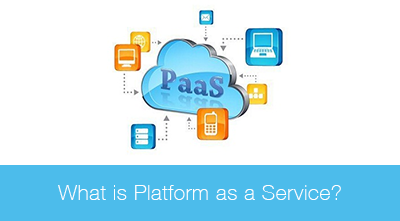What is Platform as a Service (PaaS)?
Platform-as-a-Service (PaaS) is a cloud service model that automates the creation and management of application over Internet.

PaaS, or platform as a service, is a cloud-based computing solution designed to provide an organization or business with all the hardware, software and middleware needed. This eliminates the need to purchase, install and maintain those items, and allows developers to focus on the project at hand. Generally, PaaS solutions are geared for software development. Thus, software developers are able to purchase everything needed to support the software they are developing.
Why Use PaaS?
Why does platform as a service solutions matter to businesses? Consider the significant amount of time and the monetary costs involved with purchasing hardware needed to develop, test and deploy a single piece of software. Think of the amount of time and payroll needed to maintain those elements over time. By working with a PaaS provider, software developers are able to dramatically reduce their overhead costs, as well as the time required, the personnel needed, and still be able to develop higher quality solutions.
A PaaS provider generally offers everything that would be needed to deploy applications or software to the cloud. This could include services and software development tools, as well as things like programming languages and related libraries. The PaaS provider is also responsible for maintaining those elements over time.
Not only do PaaS providers deliver the tools needed to develop and deploy applications and software, but they will be responsible for ensuring that the right “flavors” are delivered, including operating systems and tools. Some prime examples of PaaS platforms include Microsoft Azure and IBM Bluemix. Cloud Foundry also makes the list, as does Amazon Web Services and Google App Engine.
In terms of cloud-based offerings, PaaS slots into the middle, in between IaaS at the bottom and SaaS at the top. As such, providers must ensure that their offering can integrate smoothly between existing IaaS and SaaS offerings that a business might be utilizing. By working with a PaaS provider, developers are able to avoid wondering or worrying about the “where” and “how” of resource provisioning. Instead, everything required for the project is provided, and they are able to focus on application or software development.
It’s important to note that in most cases, PaaS providers do not offer the entire infrastructure that a software development firm (or any other business) would need for daily duties. For this, you would need to work with an IaaS, or infrastructure as a service, provider. These providers can offer everything from virtualized load balancers to Internet connectors and more.
There are numerous benefits to be found by working with a PaaS provider, including the following:
- Cost Savings: Because your business is not required to purchase the hardware, software and middleware, install any of it, or maintain those elements, you can save significant amounts of money.
- Time Savings: Because your team does not need to worry about installation or maintenance, you can focus strictly on software or app development and save time.
PaaS is one of the core categories in cloud computing, and continues to deliver outstanding value to many companies.